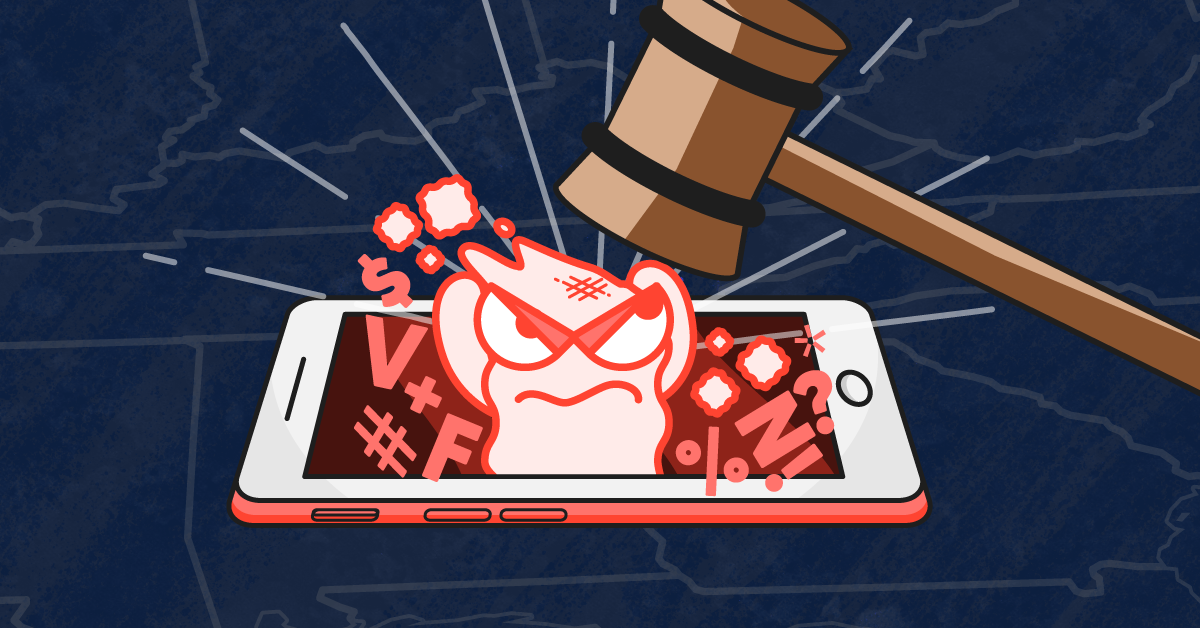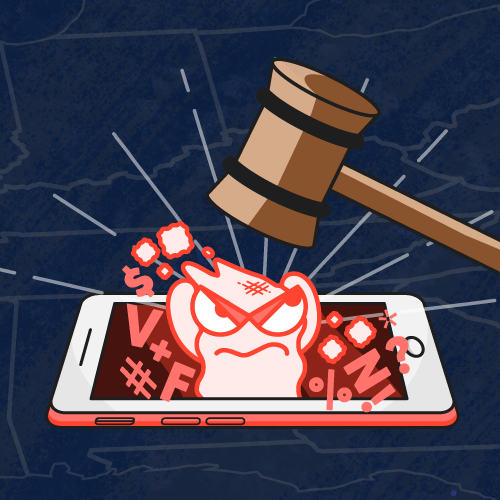
**This blog post was updated on April 7, 2022.**
If you have a child in middle or high school, you’re probably well acquainted with just how prevalent cyberbullying has become. As kids receive smartphones younger and younger — the average age kids get their first phone is now 10.2 years old — the opportunities for cyberbullying have skyrocketed. In fact, according to Bark data, 76.2% of tweens and 78.4% of teens experienced cyberbullying as a bully, victim, or witness.
Odds are, this issue has touched your family’s life in some way. Dealing with cyberbullying can be stressful and scary, and you may be unsure of how to handle the situation. This blog post is meant to give you a better understanding of what cyberbullying actually is, along with resources for learning more about it. Cyberbullying laws vary by state, too, so we’ve provided you with links for discovering the details of how your specific area addresses cyberbullying.
What is Cyberbullying?
In its simplest terms, cyberbullying is bullying that takes place online. Kids today face multiple types of cyberbullying across an incredible number of apps and social media platforms. And contrary to popular belief, it’s not just sending harassing messages — cyberbullying can take a number of different forms, including creating fake accounts, making group chats that exclude people, and more.
And unlike the schoolyard bullies of generations past, today’s cyberbullies don’t have to be in the same room, school, or even city to make someone’s life miserable. As long as a child has access to their phone and the internet, they’ll be able to feel the effects of cyberbullying.
How Do I Talk to My Kids About It?
It’s important for your kids to know that they can come to you no matter what. In one survey, only 11% of teens reported talking to their parents about incidents of cyberbullying. This can happen because kids may think their device will get taken away — even if it’s not their fault and they’ve done nothing wrong.
Teach your kids how to recognize the different forms of cyberbullying so they know when it’s happening. Stress the importance of empathy not just in person, but in all online interactions. And if you’re worried your own child might be exhibiting bullying behavior, this blog post can help you figure out how to approach it.
Is Cyberbullying Against the Law?
There is no federal law regarding cyberbullying, but most states have made some sort of effort to address this growing issue. Some have explicit criminal laws against it, while others require school or district policies to mitigate its effects. Still others view cyberbullying as a form of criminal harassment.
Every state is different — which is why we’ve compiled information for all 50 in this blog post. Below, you’ll find links to help you research how your state has responded to cyberbullying. Plus, learn more about cyberbullying here.
Note: This guide to cyberbullying laws is meant to serve as a starting point and neither gives nor purports to be a substitute for legal advice.
- Alabama
- Alaska
- Arizona
- Arkansas
- California
- Colorado
- Connecticut
- Delaware
- Florida
- Georgia
- Hawaii
- Idaho
- Illinois
- Indiana
- Iowa
- Kansas
- Kentucky
- Louisiana
- Maine
- Maryland
- Massachusetts
- Michigan
- Minnesota
- Mississippi
- Missouri
- Montana
- Nebraska
- Nevada
- New Hampshire
- New Jersey
- New Mexico
- New York
- North Carolina
- North Dakota
- Ohio
- Oklahoma
- Oregon
- Pennsylvania
- Rhode Island
- South Carolina
- South Dakota
- Tennessee
- Texas
- Utah
- Vermont
- Virginia
- Washington
- West Virginia
- Wisconsin
- Wyoming
Read more
Bark helps families manage and protect their children’s digital lives.





